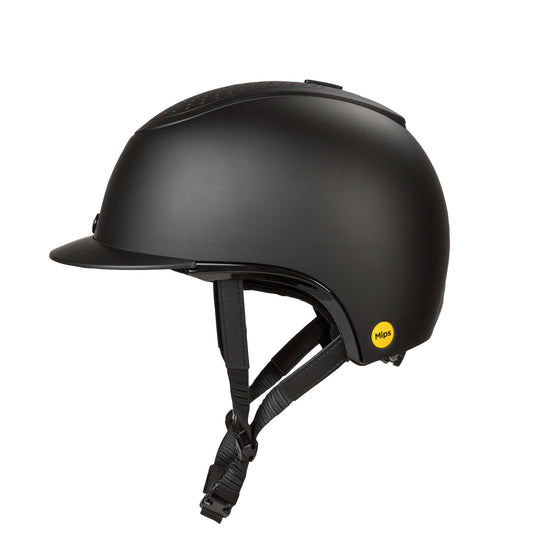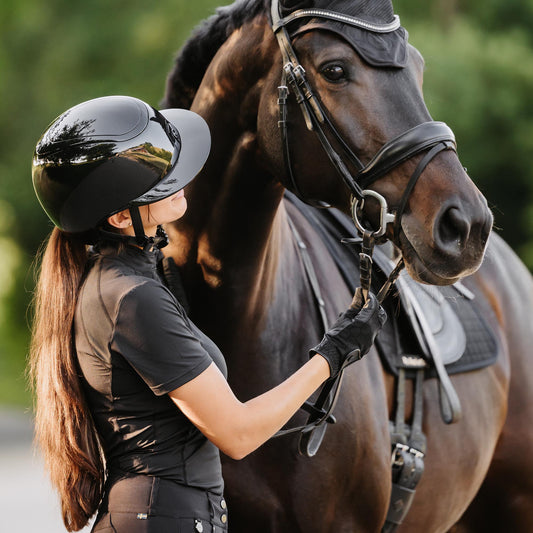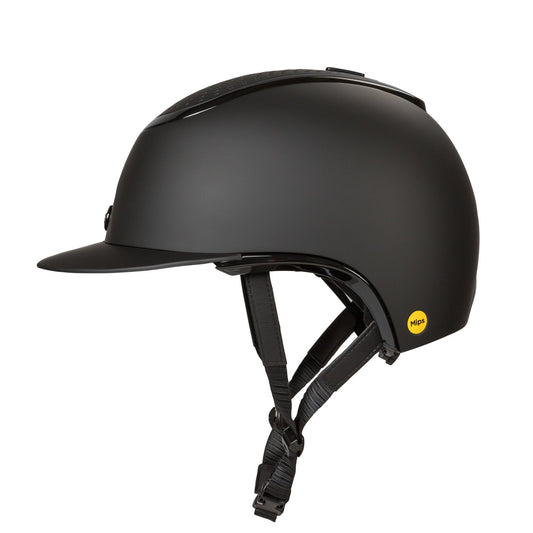New helmet standard and labelling - what does it mean?
The EU has adopted a new standard - EN1384:2023 - for riding helmets.
Helmets tested, approved and CE marked in accordance with the older standard - and also VG1 labelled - will continue to be approved until 2031.
When do I need to change my helmet?
All Back on Track riding helmets manufactured before the new standard came into force are VG1 approved and CE marked - and also have worldwide ASTM certification;
A new standard does not mean that CE-marked helmets tested against the VG1 standard have become unsafe overnight. The same rules as before still apply: discard the helmet after an impact - and replace it after it has been used for five years, regardless of whether it has been subjected to an impact or not.
In fact, the transition period extends until 2031, giving you time to use your VG1 helmet for the remainder of its recommended lifetime - even if you buy your VG1 helmet in 2026.
What exactly is a ‘standard’ (and why do they exist)?
A standard is basically a voluntary agreement between a variety of actors and stakeholders, often from several different countries, active in a specific field - in this case ‘riding helmets’. When a standard is adopted, it means that a consensus has been reached on the most important requirements for a riding helmet. This means that all helmets can be tested in the same way - according to the same protocol - which increases safety for the user. The consumer must be able to trust the product.
To test the performance of a riding helmet, it is subjected to a variety of stresses designed to mimic real-life accident scenarios as closely as possible.
Tests are carried out according to scientific methods and aim to clarify the forces the helmet can withstand, and thus how well it can be considered to protect the rider.
The current standard EN1384:2023 thus contains a series of basic requirements that it has been agreed that a safe riding helmet must be able to fulfil.
The CE marking guarantees that the helmet has been tested and found to fulfil these requirements. However, no standard or certification can guarantee absolute safety. Reality will always remain unpredictable. Each accident is unique and thus impossible to fully imitate in a laboratory environment.
What does it mean that the helmet is ‘VG1 approved’?
Helmets that have an older CE marking and are also tested in accordance with VG1 are approved until 2031. For a helmet to receive its CE marking today, it must pass the tests prescribed by the new standard EN1384:2023.
Note that helmets without a VG1 approval - in addition to their older CE marking - are no longer accepted, now that the new standard has been adopted. A helmet tested against VG1 and approved fulfils high safety requirements with regard to impact resistance, stability and shock absorption.
VG1 is a European standard, developed by the European Committee for Standardisation (CEN), which brings together standardisation bodies from 34 different countries: Sweden is represented in CEN by the Swedish Institute for Standards (SIS).
Back on Track's VG1 helmets are also ASTM certified
All Back on Track's helmets have a worldwide ASTM (American Society for Testing and Materials) certification, which is issued by the American Safety Equipment Institute (SEI).
SEI sets very rigorous requirements for the performance of the helmet and also includes peripheral parameters - such as factory inspections, requirements for certain procedures in the factory, control of each batch before release on the market and annual testing.
This periodic test can be considered fully equivalent to the one-off registration test carried out at the time a new helmet model is released on the European market;
Consequently, there are a number of different standards for riding helmets, developed by different organisations in different parts of the world. Their respective requirements and test methods may differ in part.
The same riding helmet may have several, overlapping certifications, in cases where it has been tested in accordance with different standards.
Overlapping certifications have the advantage that no single standard can be considered ‘comprehensive’ - that is, realistically imitating all possible incidents that could occur while riding or in contact with a horse.
However, several certifications show that the helmet has been subjected to several possible, more or less violent events, and has been tested for the outcome of these;
What is new in EN1384:2023?
The EN1384:2023 standard is the result of nine years of work within the EU to find common guidelines that a wide range of stakeholders in the different countries can agree on;
The new tests place higher demands than before on the shock absorption capacity of riding helmets and on their mechanical strength. New test methods have also been introduced to assess the performance of riding helmets. Previously, only the result of impact against a flat steel anvil was evaluated. However, it is rare in real life that an impact against the helmet is straight and centred.
Now the helmet is also subjected to impact against a rounded anvil, the so-called ‘equestrian hazard anvil’, which is intended to mimic the rounded edge of a guardrail, for example.
This test has already been carried out on Back on Track's helmets as part of the ASTM certification, which already includes the test.
Mips - a technology for increased safety
In the Mips test laboratory, Back on Track's riding helmets are subjected to extensive tests that include impact against an oblique anvil. The oblique anvil mimics the most common type of impact that occurs in real life: the collision between a riding helmet and a hard surface is often angled and oblique.
Back on Track's riding helmets have always been equipped with the Mips® Safety System - visible as a yellow shell under the liner.
A standard riding helmet protects the head by absorbing the energy of a hard blow using several layers of material. The impact is dispersed through the protective layers and distributed across the helmet. But a blow from the side can also lead to a violent toss of the head. This exposes the brain to rotational forces containing high energy. The brain is particularly susceptible to deformation of the type that results from an oblique impact, and they can lead to tissue damage.
The Mips system consists of a layer that can move slightly independently of the helmet. This allows the system to compensate to some extent for the forces that may be generated with an oblique impact. Thanks to these properties, Mips can help mitigate the consequences of an accident.












